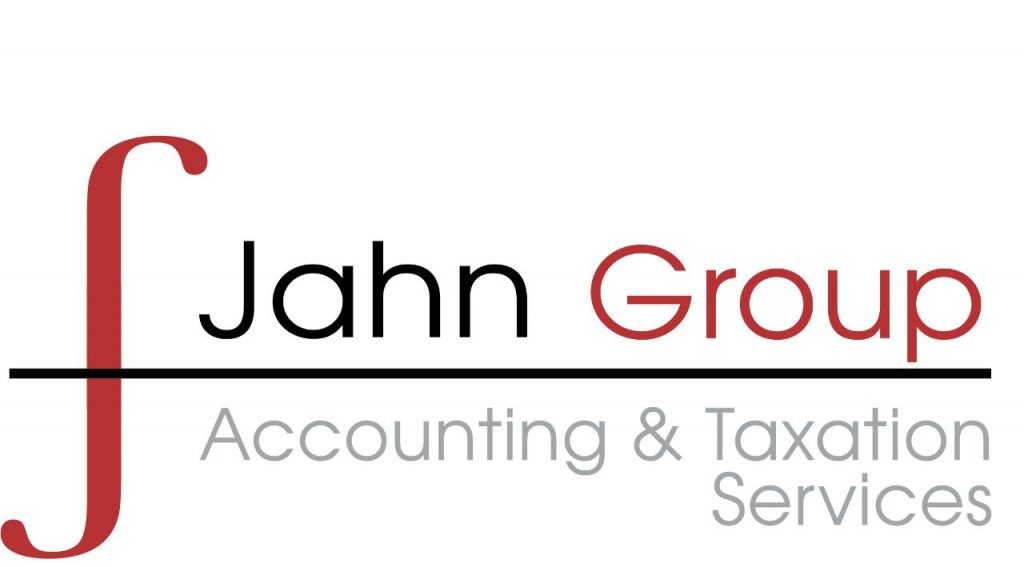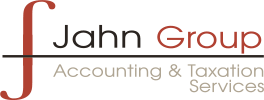
The Ultimate Guide to Self Managed Super Funds (SMSF) in Australia
When it comes to retirement planning in Australia, Self Managed Super Funds (SMSFs) have become increasingly popular in recent years.
Offering individuals greater control and flexibility over their superannuation investments, SMSFs have gained attention for their potential to maximise wealth and allow for tailored investment strategies.
However, with this increased control also comes increased responsibility and complexity.
This article aims to provide a comprehensive guide on all aspects of SMSFs in Australia, from their benefits and setup process to key regulations and investment options.
Whether you are considering starting a SMSF or already have one, this article will serve as a valuable resource to navigate the world of self-managed super funds.
What is a Self Managed Super Fund (SMSF)?
A Self Managed Super Fund (SMSF) is a private superannuation fund that is managed by its members.
In Australia, SMSFs are regulated by the Australian Taxation Office (ATO) and must comply with specific laws and regulations.
SMSFs are different from traditional superannuation funds, as they give individuals complete control over their retirement savings.

Members of an SMSF act as trustees and are responsible for making investment decisions, ensuring compliance with regulations, and managing the fund’s administration.
One of the significant benefits of having an SMSF is the flexibility it offers in terms of investment options.
While traditional super funds typically have limited investment choices, SMSF members can invest in a wide range of assets, including property, shares, managed funds, and even collectibles.
Having a SMSF can provide individuals with a tailored investment strategy that aligns with their financial goals and risk appetite.
However, it’s crucial to understand that managing an SMSF requires active involvement, time, and financial expertise.
We will delve deeper into the benefits of setting up an SMSF and the considerations you need to make before starting one.
Benefits of Having an SMSF
Setting up a Self Managed Super Fund (SMSF) can offer numerous benefits to individuals seeking more control over their retirement savings.
Here are some advantages of having an SMSF:

1. Control and Flexibility: As mentioned before, one of the primary benefits of an SMSF is the level of control it provides.
By acting as trustees, members can make investment decisions that align with their financial goals and risk appetite.
Additionally, SMSFs offer a wide range of investment options, including property, shares, managed funds, and even collectibles.
2. Tailored Investment Strategy: Unlike traditional superannuation funds, where investment decisions are made on a collective basis, an SMSF allows members to create a tailored investment strategy that meets their specific needs.
This flexibility enables individuals to maximise their investment returns and optimise tax benefits.
3. Potential Cost Savings: SMSFs can also result in cost savings, particularly for individuals with larger superannuation balances.
By managing the fund’s administration themselves, members can potentially reduce fees associated with external service providers and retain more of their retirement savings.
4. Estate Planning: Another advantage of having an SMSF is the ability to implement effective estate planning strategies.
With careful structuring, SMSFs allow for the seamless transfer of wealth to beneficiaries and can provide greater control over how assets are distributed upon the member’s passing.
While these benefits make SMSFs an attractive option, it is essential to consider the potential disadvantages and challenges that come with managing your superannuation fund.
We will explore the key considerations you need to make before starting an SMSF.
How to Establish an SMSF in Australia
If you’re considering setting up a Self Managed Super Fund (SMSF) in Australia, there are several steps you need to follow to ensure a smooth and compliant establishment process.
Here’s a breakdown of the key considerations and actions you need to take:

1. Determine your eligibility: Before diving into the process, it’s important to check if you meet the eligibility criteria for an SMSF.
Generally, you can establish an SMSF if you’re aged 18 or older, have no restrictions from a regulator, and have a genuine intention to save for retirement.
2. Appoint trustees: An SMSF requires at least two individual trustees or a corporate trustee with individual directors.
As trustees, you and other members of the fund will be responsible for managing the SMSF and its compliance obligations.
3. Create a trust deed: Every SMSF must have a trust deed, which outlines the rules and regulations governing the fund. It is crucial to engage a legal professional experienced in SMSFs to draft a comprehensive trust deed to ensure compliance with the superannuation legislation.
4. Obtain an Australian Business Number (ABN) and Tax File Number (TFN): Your SMSF needs to be registered with the Australian Taxation Office (ATO) and obtain an ABN and TFN.
This will allow your fund to receive contributions, receive tax concessions, and meet reporting obligations.
In the upcoming section, we will dive deeper into the ongoing duties and responsibilities of managing an SMSF, including annual reporting, investment strategies, and regulatory compliance.
Investment Options for SMSF Trustees
One of the key benefits of managing a Self Managed Super Fund (SMSF) is the flexibility and control over investment decisions.
As trustees, you have the power to choose where your fund invests, based on the investment strategy outlined in your trust deed.
There are a variety of investment options available for SMSF trustees, including:

– Cash investments: This includes holding cash in bank accounts, term deposits, and cash management trusts.
Cash investments provide stability and liquidity for your fund.
– Shares: Investing in shares allows your fund to participate in the growth of Australian and international companies.
It’s important to conduct thorough research and seek professional advice when selecting shares for your SMSF.
– Property: SMSFs can invest in residential, commercial, or industrial properties either directly or through managed funds. Property investments can provide long-term capital growth and rental income.
– Managed funds: This option allows your SMSF to pool its assets with other investors to gain exposure to a diverse range of investments managed by professional fund managers.
– Exchange-Traded Funds (ETFs): ETFs are investment funds that can be bought and sold on the stock exchange. They provide diversification and low-cost investment options.
When making investment decisions for your SMSF, it’s crucial to consider your risk tolerance, investment goals, and the diversification of your portfolio.
In the following section, we will discuss the importance of regularly reviewing and updating your SMSF investment strategy, as well as the role of diversification in managing investment risk effectively.
Regulations and Compliance for SMSFs
While managing your own Self Managed Super Fund (SMSF) provides flexibility and control over investment decisions…
…it is important to understand the regulations and compliance requirements that come with it.
As trustees, you have a legal responsibility to ensure that your SMSF operates within the confines of the law.
Failure to comply with the regulations can result in penalties or even the loss of your SMSF’s tax concessions.

Some key regulations and compliance requirements for SMSFs include:
– Establishing and maintaining an investment strategy: Your SMSF must have a written investment strategy that outlines the objectives and goals of your fund, as well as the investment methods you will use to achieve those goals.
– Keeping accurate and up-to-date records: It is crucial to maintain records of all financial transactions and activities of your SMSF, including bank statements, investment documents, and annual financial statements.
– Adhering to contribution caps: There are limits on how much you can contribute to your SMSF each year, including concessional and non-concessional contributions.
It is important to ensure that you do not exceed these caps to avoid penalties.
– Annual reporting and audits: SMSFs are required to lodge an annual tax return with the Australian Taxation Office (ATO) and have their financial statements audited each year by an independent auditor.
– Sole purpose test: The sole purpose of your SMSF must be to provide retirement benefits for its members.
Using your fund for personal gain or benefit before retirement is not allowed.

It is recommended to seek professional advice or consult with a qualified SMSF specialist to ensure that your fund complies with all regulatory requirements.
By adhering to the regulations and staying compliant, you can enjoy the benefits of managing your SMSF while avoiding any legal complications.
In the following section, we will dive deeper into the various compliance obligations and reporting requirements that SMSF trustees must fulfill.
The Role of a SMSF Administrator
Managing a Self Managed Super Fund (SMSF) involves fulfilling various regulatory obligations and reporting requirements.
While some trustees choose to handle the administration and compliance tasks themselves, others opt for the assistance of a SMSF administrator.

A SMSF administrator plays a crucial role in ensuring that your fund operates within the confines of the law and meets all compliance obligations.
They can assist you in navigating the complex regulatory landscape and provide guidance on investment strategies, account administration, and reporting requirements.
Some of the key responsibilities of a SMSF administrator include:
1. Preparation of financial statements: A professional administrator can prepare accurate and compliant financial statements for your SMSF, ensuring that all transactions are properly recorded and reported.
2. Lodgement of tax returns: They can assist in the preparation and lodgement of your SMSF’s annual tax return with the Australian Taxation Office (ATO).
This ensures that your fund remains compliant and up to date with its tax obligations.
3. Compliance monitoring: A SMSF administrator can help you monitor and comply with the various regulatory requirements, including contribution caps, investment restrictions, and trustee obligations.
4. Recordkeeping and maintenance: They can assist in keeping proper records of financial transactions, investment documents, and correspondence pertaining to your SMSF.
This ensures that you have accurate and up-to-date data for reporting and auditing purposes.
5. Access to expert advice: A SMSF administrator can provide access to professional advice on investment strategies, tax planning, and retirement planning.
This enables you to make well-informed decisions that align with your financial goals.

Choosing a reliable and experienced SMSF administrator is essential for the smooth operation of your fund.
Take the time to thoroughly research and select a suitable administrator who understands your goals and can assist you in meeting your compliance obligations effectively.
Next, we will discuss the benefits and considerations of engaging a SMSF administrator, and how it can contribute to the success of your self-managed super fund.
Risks and Considerations of Managing a SMSF
While many individuals choose to manage their own Self Managed Super Fund (SMSF), it is important to be aware of the potential risks and considerations involved.
One of the main risks of managing a SMSF is the complexity and ever-changing nature of the regulatory environment.
As a trustee, you are responsible for ensuring that your fund complies with all relevant laws and regulations.
This includes staying up to date with changes, such as contribution caps, investment restrictions, and reporting requirements.
Failure to comply with these regulations can result in penalties and potential legal repercussions.

Another consideration is the time and skills required to effectively manage a SMSF.
Trustees must have a good understanding of financial and investment principles, as well as the ability to keep accurate records and complete necessary reports.
Additionally, managing a SMSF can be time-consuming, particularly when it comes to administration and compliance tasks.
Furthermore, trustees carry the sole responsibility for the performance and investment decisions of their SMSF.
This means that any losses or poor investment outcomes directly impact the fund’s members. It is essential to carefully consider your investment strategy and seek professional advice when needed.
Engaging a SMSF administrator can help mitigate these risks and considerations.
They provide expert knowledge and support in navigating the complex regulatory environment, ensuring compliance, and alleviating the administrative burden.

Jahn Group’s Involvement in Your SMSF
Jahn Group can help set up and manage your fund’s compliance including the preparation of financial statements and also SMSF taxation returns*.
Our complete service includes:
- Fund establishment on an individual trustee or corporate trustee basis
- A complete accounting, compliance, tax and reporting service for your funds
- Rollovers/Set up of your own Fund
- Binding Death Benefit Nominations
- Account Based, Allocated and Complying Pensions
- Lump Sum Withdrawals
- Limited Recourse Borrowing Arrangements
- 24/7 online reporting of portfolio valuations, performance, realised & unrealised gains
- Live monitoring of contribution caps and pension limits
- Pension administration, including commencement and commutation documents
- Ongoing submission of transfer balance accounting reports (TBAR)
- A full suite of financial statements, member statements and minute
How Can I Set Up my SMFS?
Simply call us for further details on (08) 6477 9964 or arrange to book an appointment and one of our superannuation tax professions will discuss options and get you started.
*If you require additional financial advice beyond our limitations, we will happily refer you to a professional at our preferred financial planning and insurance advisory partners.





